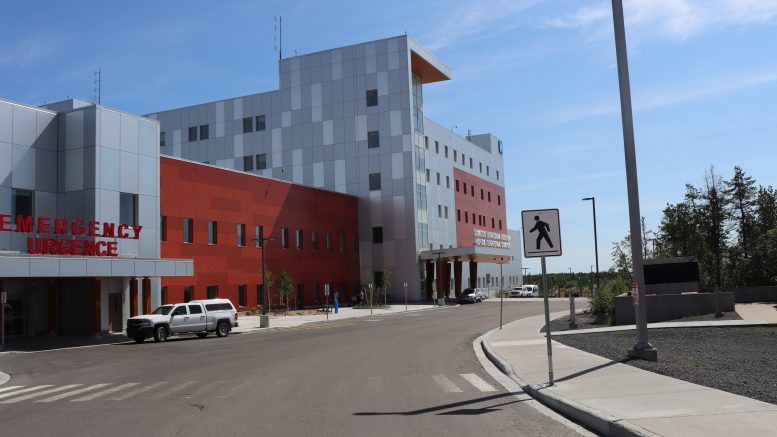A “circuit breaker” lockdown is going into effect in Yellowknife as the territory grapples with the highest national per capita rate of active COVID cases. This comes as the health authority announced there is an “oxygen supply issue” at the hospital, which was discovered due to the increase in COVID patients.
The lockdown will start at 11:59 p.m. on Sept. 24 and will continue for at least 10 days. At that time indoor gatherings will be limited to 10 people for all businesses, organizations, restaurants and bars. Only essential businesses, such as grocery and department stores, will be exempt.
This likely means all Yellowknife drinking and eating establishments will be forced to close indoor dining. Other businesses, such as gyms, will be forced to close entirely.
In a press conference on Wednesday, Premier Caroline Cochrane said the territorial government is discussing how to support the businesses, but no details were given.
“During the current outbreak situation in Yellowknife, there have been COVID-19 positive individuals attending businesses and other facilities,” Cochrane said. “We’re working with the business community to determine how we can best support them during this time.”
Other restrictions include outdoor gatherings being limited to 25 people, the maximum was previously 50. Household gatherings will continue to be limited to five visitors with a maximum of 10 people inside the home at any one time.
Schools, colleges and trade schools will remain closed, but daycares and day homes will be exempt from the restrictions.
“We know that these measures are especially difficult for those residents who can’t work from home and those who have children who need care,” said Julie Green, territorial health minister. “We also understand that several businesses will be impacted by these measures and as the premier mentioned, we are here to support them through this.”
Other provinces and territories have already introduced proof of vaccine requirements for people attending non-essential businesses such as restaurants and bars.
The NWT has not implemented these requirements, but Premier Cochrane said the territory is studying other jurisdictions that have.
“The vaccination passport is something that we need to do thorough consultation [on]. It’s going to affect people, it’s going to affect businesses and we need to make sure that we get it right when we do it,” she said.
At the press conference, Premier Cochrane announced the temporary COVID-19 restrictions in Behchokǫ̀ will continue until Oct. 7 and in Whatì until Oct. 9.
Hospital capacity
Officials also talked about the Stanton hospital capacity; 11 people have been admitted to the intensive care unit (ICU) since mid-August.
The NWT relies on Alberta for medical travel as a backup, but Alberta’s health-care system is also being overwhelmed by COVID cases.
“The NWT depends on Alberta for the care of the sickest NWT residents and its intensive care capacity is being stretched,” said NWT Chief Public Health Officer Dr. Kami Kandola.
When asked whether there are alternatives for residents needing medical travel to Alberta, Green said that isn’t necessary.
“[Alberta is] still taking patients from us and residents of their own. And if there’s a point at which they can no longer accommodate any more patients, then they will take care of transferring our patients to a place where they can be seen,” she explained.
Oxygen supply issues at Stanton
In a press release on Wednesday evening, the Health and Social Services Authority (NTHSSA) announced Stanton Territorial Hospital is having trouble delivering oxygen to residents who are ill with COVID.
The release said treatment will still be provided, but urged residents to follow public health restrictions and to get vaccinated.
“It is important to note that we are still able to care for patients who need acute care services, whether related to COVID-19, or otherwise. This notice is being provided as a precaution to let residents know there may be further impacts should case counts increase and in turn put demands on our acute care services,” the release reads.
The issue is traced to infrastructure in the hospital as treatment for severe COVID-19 patients now involves invasive high-flow oxygen devices instead of ventilators. However, this system requires upwards of four times the oxygen flow of a ventilator.
“This issues centres around the distribution system for oxygen within the hospital and limits on the total volume of oxygen that can be delivered in each zone of the building at one time,” the release says.
The NTHSSA says other jurisdictions have experienced similar issues and it is reaching out to see how they solved the problem.
Nineteen new cases were reported on Wednesday bringing the total active cases to 233.
There are 143 active cases in Yellowknife, 54 in Behchokǫ̀ and 22 in Whatì, nine in Hay River. Łutselkʼe, Fort Good Hope, Norman Wells, Délı̨nę and Fort Liard all have one active case.









